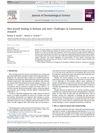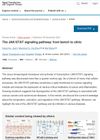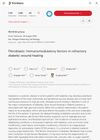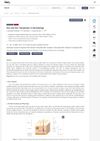Wound Healing Impairment in Type 2 Diabetes Model of Leptin-Deficient Mice: A Mechanistic Systematic Review
August 2022
in “
International Journal of Molecular Sciences
”
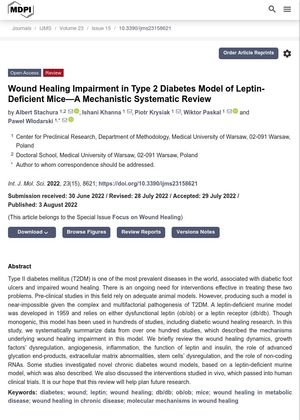
TLDR Leptin-deficient mice, used as a model for Type 2 Diabetes, have delayed wound healing due to impaired contraction and other dysfunctional cellular responses.
This systematic review discusses the impaired wound healing in leptin-deficient mice, a model for Type 2 Diabetes. The review, which summarizes data from over 100 studies, found that these mice have larger subdermal fat thicknesses and smaller dermal thicknesses, and their wound healing is more reliant on reepithelialization than contraction. The wound healing process in these mice is significantly delayed compared to healthy controls, with wounds becoming 10% larger after excision. This delay is mainly due to impaired wound contraction, not slow reepithelialization, and is associated with low TGF-β RI expression and attenuated SMAD3 nuclear translocation. The review also found that leptin-deficient mice exhibit dysfunctional changes in growth factors’ production, release, and distribution during wound healing, and angiogenesis is significantly impaired. The inflammation course in these mice is disturbed by an increased level of many inflammatory cytokines and elongation of their function. The study also reveals that γδ T cells, responsible for producing cytokines and growth factors, become dysfunctional due to hyperglycemia, affecting their proliferation and response to epithelial cell damage. The study also highlights the role of cyclooxygenase-1 (COX-1) and cyclooxygenase-2 (COX-2) in wound healing. In leptin-deficient mice, COX-1 expression declines while COX-2 expression increases upon wounding. Systemic leptin treatment normalizes these expressions, aiding wound healing. The study also notes that wound healing is associated with increased production of prostaglandins E2 (PGE2) and D2 (PGD2), mediated by normalized COX-1 expression. The review further discusses the role of macrophages, which exhibit a pro-inflammatory phenotype post-injury in non-diabetic mice, but this phenotype persists in leptin-deficient mice, inhibiting normal wound healing. Lastly, the study mentions that leptin acts as a mitogen for primary epidermal keratinocytes, suggesting its crucial role in wound healing. The review concludes that understanding these mechanisms can provide insights into potential therapeutic strategies for improving wound healing in diabetic patients.
